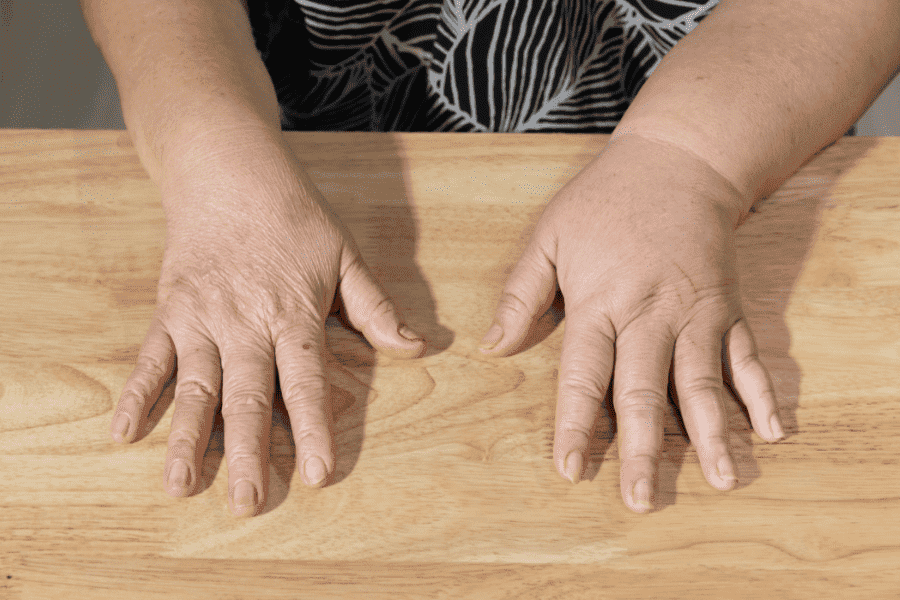What is DVT?

- What is DVT?
- What are the Signs I Have DVT?
- How will My Doctor Diagnose DVT?
- What Treatments are Available for DVT?
- Can I Prevent DVT?
The circulatory system plays a vital role in circulating oxygen-rich blood from your heart to your extremities and returning deoxygenated blood back to your heart. Unfortunately, sometimes, this system malfunctions, resulting in serious conditions. One such problem is deep vein thrombosis (DVT).
DVT affects around 900,000 people in the U.S. every year, leading to illness, disability, and even death. So, what exactly is DVT, and what are its warning signs? Here’s what you need to know about DVT.
What is Deep Vein Thrombosis?
A blood clot that develops in the venous system is called DVT. Medically known as thrombosis, it usually develops in the leg veins. Immediately seek medical attention if you think you may have DVT symptoms.
Every year, 100,000 people die as a result of a DVT that travels through your heart and into your lung, causing a pulmonary embolism, or PE. According to research, “after nearly a decade of decline, the death rate from lung clots (PEs) is now on the rise, particularly among African Americans and those under the age of 65.” Researchers were unsure why there was a racial component to these statistics. However, they are certain that obesity contributes to the rising numbers.
How do you know if you have a DVT? Are the symptoms of a PE and a DVT different? We have answers.

What are the Signs I Have DVT?
A deep vein thrombosis (DVT) can occur without any symptoms. However, if you experience any of the following, do not overlook them:
- Sudden swelling in your arm or leg with no apparent cause
- Blue or red discoloration on your skin
- Pain or soreness in your legs, hips, or groin area when walking or standing up
- Painful warmth in the affected area
If you ignore these symptoms, the blood clot can break off and travel to your heart, lung, or brain, causing a pulmonary embolism (PE), which is highly dangerous. The combination of DVT and PE is known as venous thromboembolism (VTE).
Signs of VTE include:
- A racing heartbeat
- Chest pain that worsens when you take a deeper breath
- Coughing (may or may not be coughing up blood)
- Difficulty catching your breath
- Feeling dizzy
- Fainting
If you experience these symptoms, do not wait for an appointment; call 911 immediately.
How Will My Doctor Diagnose DVT?
The first step in diagnosing DVT is to confirm that you are experiencing it. Your doctor will examine your legs for symptoms and ask you questions about your symptoms and any risk factors that make you vulnerable to the condition.
To confirm the diagnosis, your doctor may conduct a few tests, such as:
- D-dimer blood test that identifies rising levels of a protein produced by blood clots.
- Duplex ultrasound uses sound waves to create pictures of how blood is flowing through your veins.
- CT venogram uses dye and X-rays to obtain a clear image of the vein structures in your feet and legs.
Venography is the most invasive of these tests and is usually unnecessary. Typically, the D-dimer or ultrasound is employed to diagnose DVT accurately. Once the condition is confirmed, appropriate treatment can be implemented.

What Treatments Are Available for DVT?
The objectives of DVT (Deep Vein Thrombosis) treatment are as follows:
- Stop the clot from enlarging
- Prevent the clot from breaking apart and moving through the bloodstream
- Decrease the likelihood of another DVT occurrence
Blood thinner medications (anticoagulants) are typically used to treat DVT. This treatment can achieve all three objectives. However, thrombolytics (clot busters) may also be used to break up the clot if necessary. In cases where medication cannot be taken, a filter can be inserted into a large vein to prevent the clot from reaching the lungs in case it dislodges.
Can I Prevent DVT?
Reducing the chances of developing deep vein thrombosis (DVT) is possible. However, anything that interrupts the normal blood flow deep within the veins can lead to the formation of blood clots. For instance, major surgery or a severe injury can damage the veins in the body. Moreover, aging is also a risk factor for developing blood clots.
Various risk factors can increase the chances of developing deep vein thrombosis (DVT). These include:
- Age: If you are over 60 years old, the risk of developing DVT is higher.
- Lack of movement: Sitting or standing for a prolonged time can restrict blood flow and increase the risk of DVT.
- Vein damage: If you have had an injury that has damaged your veins, this can increase the risk of DVT.
- Obesity: Being overweight or obese can increase the risk of DVT.
- Medical conditions: Certain medical conditions, such as cancer, heart failure, ulcerative colitis, or Crohn’s disease, can increase the risk of DVT.
- Pregnancy: Pregnant women are at higher risk of developing DVT due to hormonal changes and restricted blood flow.
- Hormone Therapy: Taking hormone replacement therapy or oral contraceptives can increase the risk of DVT.
- Infection and inflammation: Infection or inflammation in the body can trigger DVT.
- Smoking: Smoking can increase the risk of DVT and other health problems.
- Surgery: Major surgery or hospitalization can increase the risk of DVT due to restricted movement and changes in blood flow.
If you have a family history of blood clotting disorders and you also have any of the other risk factors associated with DVT, it is strongly recommended that you see your doctor to discuss your risk level. Genetics can play a significant role in increasing your risk, as it can disrupt the normal functions of blood clotting.
Staying active is important to maintaining good vein health. Keeping your legs in motion reduces the risk of DVT. When you move your legs, the calf muscles contract and expand, which helps with blood flow. Therefore, doctors suggest walking around the plane every few hours on a long flight. Sitting for extended periods can increase the risk of DVT.
Bedridden patients often suffer from blood pooling in their legs and feet, which can be a serious medical issue. Compression stockings are an effective solution to prevent this and maintain healthy blood flow.
Next Steps for Deep Vein Thrombosis
If you’re concerned about DVT or any other vascular problems, we encourage you to book an appointment with one of our experienced vascular specialists at Coastal Vascular & Interventional. Our team is here to provide you with the best possible care.


